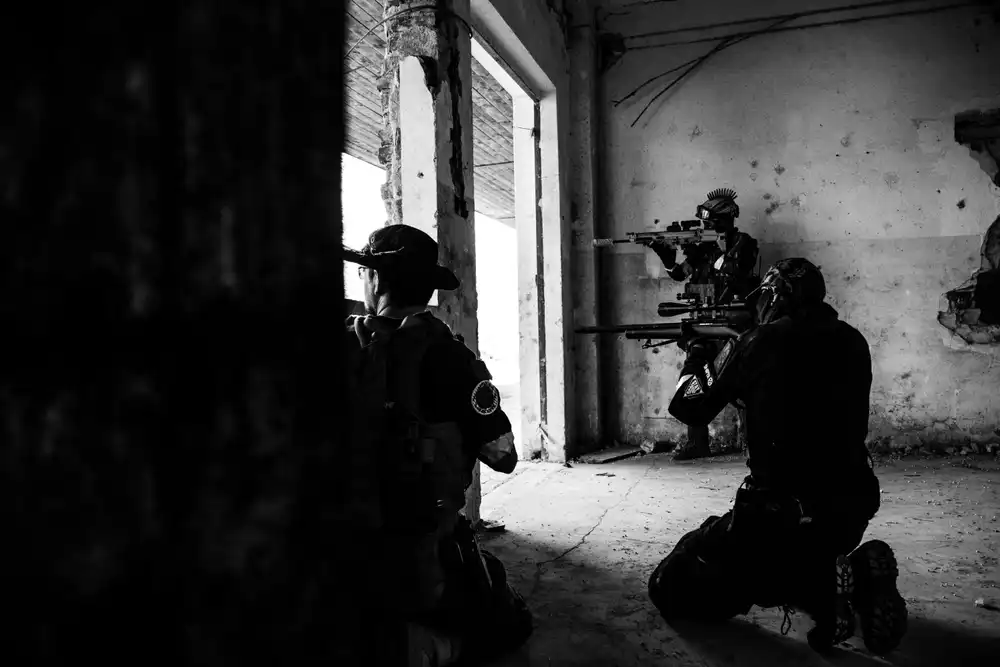Imagine being in a high-stakes chess match where every move could mean victory or defeat. Now, add the complexity of real-world scenarios involving teamwork, resource management, and unpredictable variables. That’s the essence of war games and simulations in military training. These exercises are not just about playing games; they’re about honing strategic thinking skills that can save lives and lead to success on the battlefield. So, why is it crucial for cadets to analyze these strategies? Let’s dive into the fascinating world of military simulations!
The Role of War Games in Military Training
War games have been a staple in military training for centuries. They serve as a platform where cadets can experiment with tactics, test theories, and learn from mistakes without the dire consequences of actual combat. Think of it as a safe sandbox where future leaders can play out various scenarios and see what works — and what doesn’t.
What Are War Games?
At their core, war games are structured activities that simulate military operations. They can range from tabletop exercises to full-scale virtual simulations. The primary goal? To analyze strategies, understand enemy movements, and make informed decisions based on available data.
- Tabletop Exercises: These involve maps and models where participants discuss strategies and outcomes.
- Computer Simulations: Advanced software allows cadets to engage in realistic combat scenarios with AI opponents.
- Field Exercises: Live-action drills that mimic real-life situations in controlled environments.
The Importance of Analyzing Strategy
Analyzing strategy is not just an academic exercise; it’s a critical skill for any military leader. The ability to assess different approaches and predict outcomes can mean the difference between success and failure. Here’s why it matters:
1. Understanding the Bigger Picture
In war games, cadets learn to see beyond their immediate actions. They must consider how their decisions impact the overall mission. This holistic view is essential when dealing with complex operations where multiple factors come into play.
Example: Imagine a cadet commanding a squad during a simulated attack on an enemy position. They must think about troop movements, supply lines, and potential enemy counterattacks all at once.
2. Learning from Mistakes
One of the most valuable lessons from war games is learning how to fail gracefully. When strategies don’t work as planned, cadets have the opportunity to analyze what went wrong without real-world repercussions.
- Debriefing Sessions: After each exercise, teams gather to discuss outcomes, focusing on both successes and failures.
- Critical Thinking: Cadets are encouraged to ask questions like “What if we had done this differently?” or “How could we have anticipated that move?”
3. Developing Adaptability
The battlefield is unpredictable. War games teach cadets how to adapt their strategies on the fly when new information arises or when initial plans fall apart.
Analogy: Think of it like playing a video game where the rules change mid-level. You have to think quickly and adjust your strategy if you want to win!
The Intersection of Strategy and Gaming
You might be wondering how gaming fits into all this. Well, many principles used in military strategy are mirrored in popular strategy games — both digital and tabletop. Here’s how they connect:
1. Resource Management
In both war games and strategy video games like “Civilization” or “StarCraft,” players must manage resources effectively to achieve their goals. This skill translates directly to military operations, where resources like personnel, equipment, and time are often limited.
| Game Element | Military Equivalent | Description |
|---|---|---|
| Resources (Gold/Food) | Sustainment Supplies | Civilians must manage resources for survival; militaries must ensure troops are well-supplied. |
| Troop Deployment | Tactical Maneuvering | Civilians deploy units strategically; militaries must position forces for optimal effectiveness. |
| Victory Conditions | Missions Objectives | Civilians aim for victory through various means; militaries pursue defined mission objectives. |
2. Strategic Planning
Both types of games require players to think several steps ahead. In military training, this translates into planning operations that account for potential enemy actions and environmental factors.
- Create Contingency Plans: Just like in a game where you prepare for different scenarios, military leaders must have backup plans ready.
- Predict Opponent Moves: Understanding your opponent’s strategy is crucial — whether in a game or on the battlefield.
3. Team Coordination
A successful strategy often relies on effective teamwork — something both war games and multiplayer strategy games emphasize heavily. Cadets learn how to communicate clearly with their team members, delegate tasks, and coordinate efforts toward common objectives.
A Case Study: The Success of Strategic Simulations at West Point
The United States Military Academy at West Point has long recognized the value of simulations in training future leaders. One notable example is their use of the “Command Post Exercise” (CPX), which immerses cadets in realistic scenarios requiring quick thinking and strategic analysis.
The Scenario:
- A simulated insurgency threatens stability in a fictional country.
- Cadets must develop a comprehensive plan that includes intelligence gathering, troop deployment, and civilian safety measures.
The Outcomes:
- Cohesion: Cadets learn to work together under pressure, enhancing teamwork skills.
- Crisis Management: They practice making decisions with incomplete information — a common occurrence in real-life operations.
- Tactical Innovation: The exercise encourages creative problem-solving as cadets develop unique solutions to complex challenges.
The Takeaway: Why Cadets Should Embrace War Games
The world of war games and simulations offers invaluable lessons for cadets preparing for military service — lessons that extend far beyond the battlefield. By analyzing strategies within these controlled environments, future leaders develop critical thinking skills, adaptability, and teamwork abilities essential for success in any field.
If there’s one takeaway from this exploration, it’s this: engaging with war games isn’t just about playing; it’s about preparing for life’s unpredictable challenges with confidence and skill!
Frequently Asked Questions (FAQ)
What are war games?
War games are structured activities designed to simulate military operations, allowing participants to analyze strategies and make decisions without real-world consequences.
How do simulations help with decision-making?
Simulations provide a safe environment for practicing decision-making under pressure, allowing participants to learn from mistakes without dire repercussions.
Aren’t war games just games?
No! While they may be fun, war games serve serious purposes by teaching critical skills such as strategic thinking, resource management, and teamwork.

